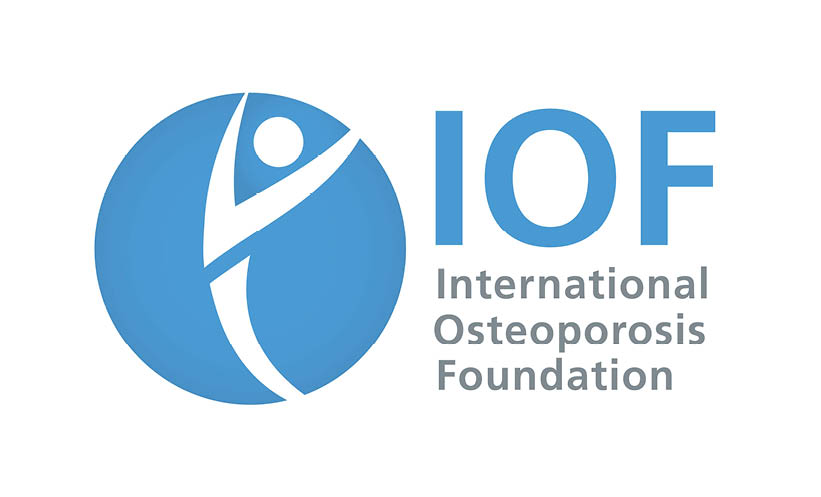Written by James Coker | Senior Editorial Assistant, European Medical Journal | @EMJJamesCoker
![]()
To mark this year’s World Osteoporosis Day (WOD) on the 20th October 2017, the European Medical Journal spoke to the International Osteoporosis Foundation (IOF) to discuss the campaigns that take place during this event and the work that the society undertakes throughout the year, as well as critical information and facts on this under-recognised condition. We would like to thank the IOF for taking the time to provide such interesting and detailed responses to our questions.
Q: What was the inspiration for starting World Osteoporosis Day (WOD)? Have the aims and scope of the events and campaigns evolved over time?
A: In 1996, when World Osteoporosis Day (WOD) was marked internationally for the first time on 20th October, public awareness and knowledge about the disease was poor. Healthcare professionals’ knowledge of osteoporosis was also far more limited than it is today. Thanks to almost two decades of work by the International Osteoporosis Foundation (IOF) and its community of patient and medical societies, awareness has improved considerably. Nevertheless, osteoporosis continues to be vastly under-diagnosed and under-treated. Misconceptions, such as osteoporosis being a woman’s disease, still abound and for various reasons there has been a dangerous fall-off of treatment uptake for both primary and secondary prevention. This shows us that, despite some progress, the need for an annual public awareness and information campaign is more necessary than ever before.
Over the years, WOD campaigns have focussed on a variety of critical issues related to osteoporosis and fracture prevention. Topically focussed themes have included exercise, nutrition, vertebral fractures, policy action, risk factors, osteoporosis in men, postmenopausal osteoporosis, and secondary fracture prevention. Beginning in 2016 and looking to the future, the IOF aims to carry out the annual campaign under the umbrella theme ‘Love Your Bones – Protect Your Future.’ We believe this top-level tagline is adaptable to national campaign needs and, above all, it pinpoints the reason we must all cherish and protect our musculoskeletal health: to ensure healthy mobility and independence in older age.
Moving forward, an important aim of WOD will be to change the persistent and false perceptions of the disease. Patients, the medical community, and healthcare authorities must all understand that the outcome of osteoporosis, which results from a decrease in bone quality and quantity, is that the patient will have a high risk of fragility fractures that are potentially devastating. These are not only life-threatening, but all too often take a huge personal and economic toll. In Europe, the disability due to osteoporosis is greater than that caused by most cancers and is comparable or greater than that lost to a variety of chronic non-communicable diseases, such as rheumatoid arthritis, asthma, and hypertension-related heart disease. Hip fractures cause the most morbidity and are the cause of mortality rates of 20–24% in the first year following the fracture. Loss of function and independence among survivors is profound, with 40% unable to walk independently and 60% still requiring assistance a year later. Because of these losses, 33% are totally dependent or in a nursing home within the subsequent year.
For WOD 2017 the IOF will issue the first edition of the IOF Compendium of Osteoporosis. This comprehensive reference document describes osteoporosis, its diagnosis, pathophysiology, prevention, treatment, global prevalence, and socioeconomic burden. Most importantly, it will outline a blueprint of eight essential strategies to tackle the worldwide epidemic of fragility fractures. The Compendium will put a spotlight on the burden of the disease and will show healthcare authorities and governments how osteoporosis and fracture prevention can best be prioritised within the healthcare agenda.
IOF President, Prof Cyrus Cooper, urges all healthcare providers to join the WOD call to action by sharing the IOF Compendium with local healthcare authorities: “As physicians and as healthcare advocates we should all be voicing our concern about the universal neglect of musculoskeletal health. I invite all to join our call for urgent action to stem the enormous human and socioeconomic burden of the disease. “
Q: Could you describe the types of events and campaigns that are undertaken by the International Osteoporosis Foundation (IOF) during WOD each year?
A: A key objective of WOD is to provide IOF member national societies, and other stakeholders in the bone health community, with materials and resources that can be adapted and used in translation at the national level. Among the resources in previous years have been influential reports, such as last year’s ‘Gaps and Solutions in Bone Health – A Global Framework for Improvement’, that are directed at health policy officials and healthcare professionals. This year we are looking forward to the publication of a new landmark reference for the field: ‘The IOF Compendium’. We also make available a wide array of informational brochures, fact sheets, impactful videos, and infographics aimed at patients and the general public. IOF spokespersons also attend scientific meetings and public awareness events, give interviews, and participate in national events around the world. Finally, a new focus on social media and digital communications has helped to increase WOD outreach to the broader community, including young people.
Q: What has been the most successful campaign that has ever taken place for WOD?
A: There has been a steady increase in both the public outreach and number of events, year by year. The incredible commitment of IOF national societies is reflected in their excellent, far-reaching campaigns which raise awareness on a national level. Last year, international media reports derived from global IOF efforts alone appeared in >1,000 online and print articles, and were estimated to have reached an audience of approximately 2 billion people. A WOD message shared via twitter reached >496,000 people. Over the past decade there have been many memorable highlights, including the award-winning ‘Bone Appetit’ campaign, and a unique photographic exhibit and press conference held at the European Union (EU) in 2010.
Q: Has the increased awareness of osteoporosis led to improved outcomes in terms of the prevalence of the condition worldwide since the campaign first started in 1996?
A: The prevalence of osteoporosis and related fractures is primarily driven by demographics, i.e. the ageing of population and by environmental factors such as increasingly sedentary and urban lifestyles in many parts of the world. As a result, the forecast is that the number of hip fractures due to osteoporosis will rise by approximately 310% in men and by 240% in women from 1990–2050.
Although the annual WOD campaign cannot reverse the impact of these dramatic demographic trends, we believe it plays a role in mitigating the upward trajectory of fractures in three ways: by increasing public awareness of prevention and changing the public’s perception of the disease; by educating and sensitising the medical community; and, above all, by raising the red flag among health authorities and recommending prioritisation of bone health and strategic action in terms of healthcare policy.
Q: How does the prevalence of osteoporosis vary around the world? Does the IOF have strategies that are targeted towards specific regions?
A: Osteoporosis (which is a measure of bone loss) is under-diagnosed, and not recorded in public records. Instead, fragility fracture rates, primarily hip fractures for which hospital records exist in most countries, are used to reflect the prevalence of osteoporosis. Around the world there are marked variations in the incidence of hip fractures, in the prevalence of vertebral fractures and in the 10-year probability of major osteoporotic fractures as shown by FRAX algorithms.
Age-standardised hip fracture incidence varies approximately 10-fold for both men and women. Why hip fracture risk varies so much between countries is not currently known. Environmental factors may play a greater role than genetic factors. Epidemiological studies of immigrant populations lend support to this hypothesis.
During the next three decades, the demographic shift in Asia, Africa, and Latin America will result in these regions bearing the brunt of the increase in hip fracture incidences worldwide. In absolute terms, Asia faces the most marked increases, and it is expected that by 2050 roughly half of the world’s hip fractures will occur in that region. The annual number of fractures in the EU is expected to rise from 3.5 million in 2010 to 4.5 million in 2025, corresponding to an increase of 28%.
IOF programmes and projects are targeted to regional needs; however, the key strategies and priorities for action which are required to stem the tide of fractures are similar for all regions. Among eight global priority actions which are clearly outlined in the IOF Compendium of Osteoporosis, is the provision of Fracture Liaison Services (FLS) to prevent secondary fractures in those who are clearly at highest risk.
IOF Capture the Fracture® programme, in particular, is making strides in promoting FLS through training and mentorship, setting best practice standards, and recognising the work of FLS all over the world. The impact of the programme and its FLS Best Practice Framework is being seen worldwide. Already, the programme has recognised 237 FLS in 37 countries across all continents.
As a leading expert and advocate for secondary fracture prevention, the Prof Cooper calls for the widespread implementation of FLS as a proven and cost-effective way to reduce the worldwide burden of fragility fractures: “If systematically identified and treated, patients who have suffered a first fracture can protect themselves against further, potentially life-threatening and debilitating fractures. As well as benefits to the patients, FLS result in long-term cost savings for the healthcare system.”
Q: What are the main reasons for so many people with osteoporosis being left untreated for their condition? What needs to change for this situation to substantially improve?
A: An EU-wide study carried out by the IOF in 2010 showed that there is a large gap between the numbers of women who are treated compared to the proportion of the population that could be considered eligible for treatment based on their fracture risk. In the USA, a recent study of hip fracture patients found that just 19% had been receiving a bone-active osteoporosis treatment before the fracture occurred. As shown in a 2016 study, even after the fracture, the percentage of women receiving treatment barely changed, rising to just 21%.
There are several likely causes of under-diagnosis and low or declining treatment uptake. First of all, as with all chronic diseases, poor compliance is one of the most important treatment problems. Studies show that only 40% of patients prescribed treatment remain on treatment for >1 year. At 2 years, only 20% of patients are still taking their medication.
Reimbursement and availability of bone densitometry (DXA) and treatment is another key factor. For example, in 2007 the Centres for Medicare & Medicaid Services in the USA cut the reimbursement rate for DXA testing, leading to a reduction in testing from a peak of 17.9% of women >65 years of age having been tested in 2009, to 14.8% in 2014. Restricted access to diagnostic testing complicates efforts to diagnose osteoporosis, may affect patients’ willingness to undergo therapy, or make them ineligible for treatment reimbursement in many countries.
Additionally, in recent years, media reporting of rare side effects has spooked patients, particularly in the USA and Europe. In many high-risk patients the fear of very rare side effects linked to some medications is often greater than the fear of sustaining fractures, despite the fact that fractures can cause irreparable long-term disability and loss of quality of life, or even premature death. This is why WOD messaging will increasingly seek to sensitise the public to the dangerous and life-altering consequences of untreated osteoporosis.
Clearly, the challenges are complex, and no single strategy is likely to change the situation substantially. What is needed is a broad array of public health measures, increased public and healthcare professional education, and, most importantly, the implementation of FLS as discussed above.
Q: Do you think the impact of osteoporosis is underestimated by governments and healthcare providers?
A: There is no doubt that the importance of osteoporosis and fracture prevention is vastly underestimated by the healthcare community. Whereas primary care providers worldwide regularly assess and prescribe treatment for patients with hypertension in order to prevent cardiovascular events, patients at high fracture risk are not assessed or managed to prevent fractures. This is contrary to recommendations from national medical and scientific organisations, which provide clear management guidance for those with osteoporosis or high fracture risk.
Q: What are the main complaints and common themes you hear from patients with osteoporosis?
A: IOF has compiled many real-life stories, provided by patients affiliated with national patient societies within the IOF umbrella. These stories, often very moving, are presented on the WOD and IOF websites. A common theme that arises in many of the stories is the difficulty the patient had in attaining timely diagnosis and treatment, particularly for male patients and for people who have sustained vertebral fractures. Even now, many are simply prescribed pain killers and sent home. Often a patient suffers multiple, debilitating vertebral fractures before a final diagnosis is made.
For further information, please see the following sources:
World Osteoporosis Day: www.worldosteoporosisday.org
IOF Global Patient Charter: www.iofglobalpatientcharter.org
Capture the Fracture®: www.capturethefracture.org
International Osteoporosis Foundation: www.iofbonehealth.org








